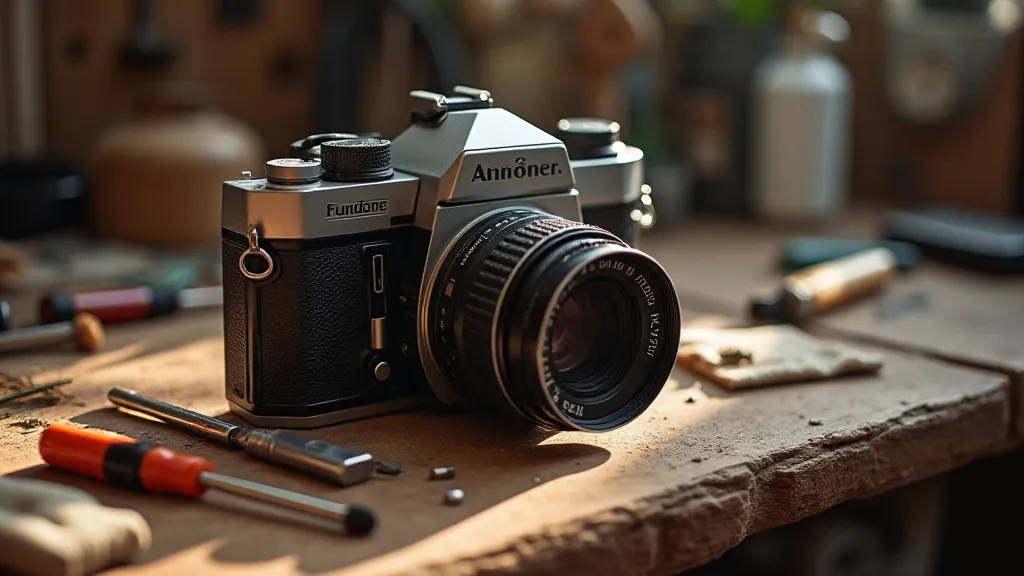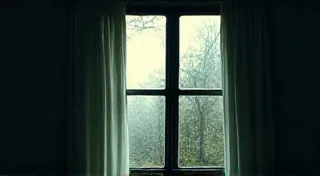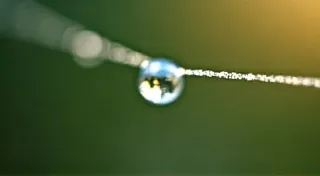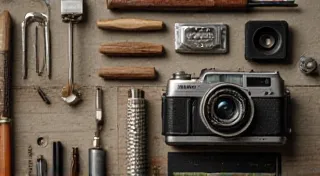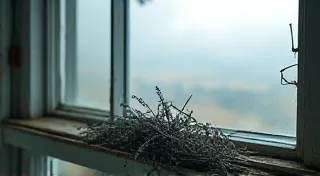Resonance of Shutter: Understanding and Repairing Common Mechanical Failures
There's a peculiar magic in holding a vintage film camera. It's not just the weight, the feel of the metal, or the satisfying click of the shutter; it’s the feeling of connecting with a legacy. Each camera holds echoes of the hands that built it, the moments captured, and the lives touched. These aren't disposable tools; they're enduring testaments to a time when craftsmanship reigned supreme. But time, inevitably, takes its toll. A once-reliable machine can become stubborn, reluctant, or altogether silent. This isn’s about fixing a gadget; it's about rekindling a soul.
I remember finding my first vintage camera, a battered Yashica Mat 124, at a flea market. It was buried under a pile of dusty knick-knacks, the leatherette peeling, the lens clouded. The vendor, an elderly gentleman with twinkling eyes, seemed almost apologetic for its condition. "It needs some love," he's said, almost whispering. That camera became my gateway to a whole world – a world of meticulous mechanics, resilient engineering, and the quiet satisfaction of bringing something beautiful back to life.
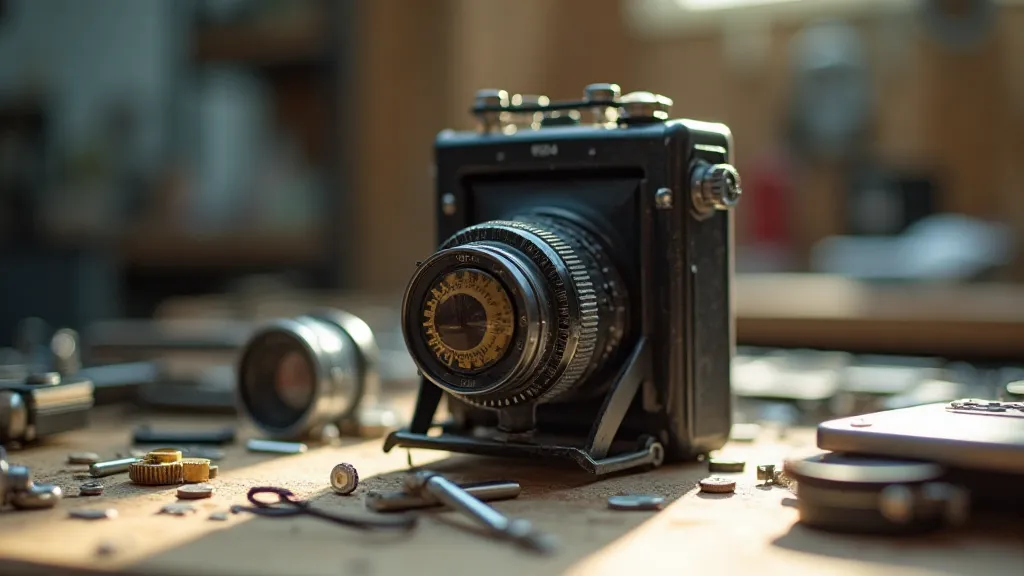
The Beauty of Mechanical Complexity and the Allure of the Past
Modern digital cameras are marvels of engineering, no doubt. But their complexity is often hidden, abstracted behind layers of software and microchips. Vintage cameras, on the other hand, lay bare their workings. You can see the gears interlocking, the springs recoiling, the levers pivoting – a ballet of precisely engineered parts working in harmony. This transparency fosters an appreciation for the ingenuity of the designers and the skill of the craftsmen. Knowing how things *work*— truly work— enhances the experience of using them. This appreciation extends beyond mere functionality; it’s about understanding the history, the purpose, and the sentimental value these objects hold. For many, owning a vintage camera isn't just about taking pictures; it’s about holding a piece of the past, a tangible link to previous generations and their perspectives. You can truly appreciate this when you’ve experienced the process of restoring one; understanding why these machines evoke such powerful feelings is a significant part of the journey. The allure isn’t just in the image creation, but in the story it carries.
This appreciation is critical to restoration. It's not simply about replacing parts; it's about understanding *why* a part failed, how it functions within the system, and what impact its failure has on the overall operation of the camera. A superficial fix might temporarily mask the problem, but it won't restore the camera to its original resonance. Sometimes, the most rewarding part of the process is delving into the history of the camera, tracing its lineage, and imagining the lives it has touched.
Common Mechanical Foes: And How to Tackle Them
Let's explore some of the most frequent mechanical issues encountered when restoring vintage film cameras and some basic troubleshooting and repair solutions. Keep in mind, this isn’s a complete guide; more complex issues often necessitate professional intervention. Safety is paramount – always prioritize handling delicate mechanisms with care and avoid forcing anything.
1. Sticky Shutter Curtains
This is a very common ailment, especially in cameras that have been stored in humid environments. Shutter curtains, often made of fabric or foil, can become glued together due to age, moisture, or lubricant breakdown. The camera might fail to fire, or the shutter speed might be inaccurate. The most effective solution is often a gentle cleaning. Using a specialized shutter cleaning solution (available online or at camera repair shops), carefully apply a small amount to a cotton swab and gently clean the edges of the curtains. Allow the camera to dry thoroughly before attempting to use it.
2. Jammed Focusing Mechanism
The focusing mechanism, often a complex system of helicoids and gears, can seize up due to dirt, corrosion, or dried lubricant. Disassembly is often required. Carefully disassemble the focusing mechanism, taking photos as you go to ensure correct reassembly. Clean all parts with a specialized cleaning solution and lubricate with a light machine oil. Don’t over-lubricate, as this can attract more dirt. Precision and patience are key here. The feeling of bringing a frozen mechanism back to life, allowing focus to flow smoothly once again, is incredibly satisfying, and further emphasizes the significance of preserving these mechanical marvels.
3. Faulty Light Meter (if applicable)
Many vintage cameras incorporated light meters, which are often the first components to fail. These meters, often selenium or cadmium sulfide cells, degrade over time and can become inaccurate or completely non-functional. Unfortunately, direct repair of these cells is often impractical. The best solution is to use an external light meter – a relatively inexpensive and readily available option. The experience of embracing these imperfections, acknowledging that technology marches on, and finding creative workarounds truly enriches the photographic journey. It’s a reminder that the beauty often lies not in perfection, but in the character and story the camera carries.
4. Sticky Film Advance/Rewind Levers
Similar to shutter curtains, film advance and rewind levers can become stiff or unresponsive due to dried lubricant. Careful cleaning and lubrication, using a specialized oil, can often restore smooth operation. In some cases, corrosion might be present, requiring more extensive cleaning and potentially replacement of affected parts. Don’s neglect the sprockets! Cleaned and lubricated sprockets help ensure smooth, even film transport.
5. Problems with the Viewfinder
The viewfinder, often a complex system of prisms and mirrors, can develop issues such as fogging, separation, or misalignment. Cleaning the internal surfaces with a specialized lens cleaning solution might improve visibility. However, more severe problems, such as prism separation, often require professional repair.
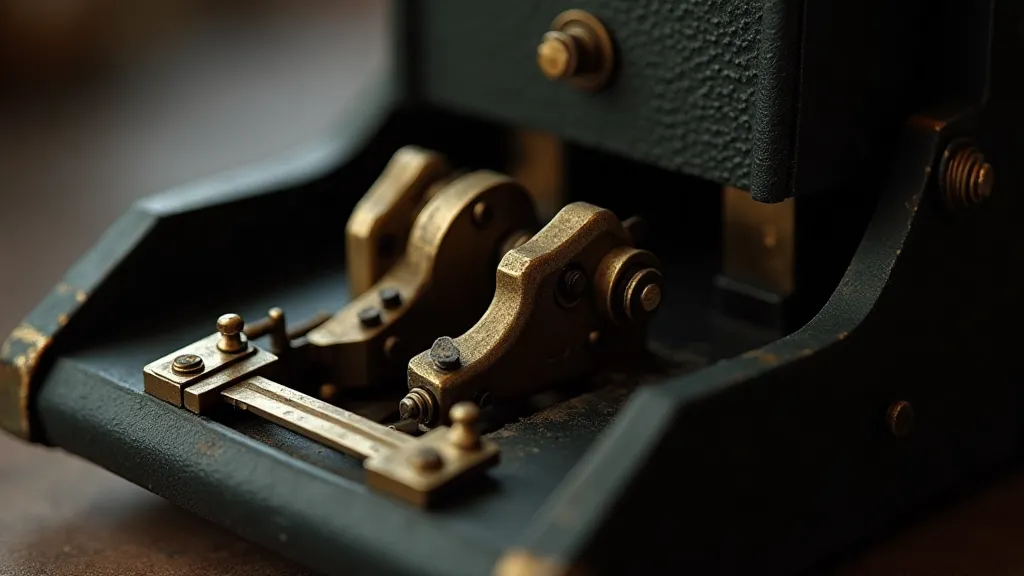
More Than Just a Repair: A Connection to the Past and a Story to Tell
Restoring a vintage film camera isn't just about fixing a machine; it’s about preserving a piece of history. It’s about honoring the craftsmanship of the era and ensuring that these beautiful objects continue to inspire future generations of photographers. Each camera has a story to tell, and by bringing it back to life, you become part of that story. The simple act of holding a camera, knowing its past, and anticipating the images it will capture connects you to something larger than yourself.
I recall meticulously restoring a beautiful Kodak Retina IIa. The focusing screen was cracked, the shutter curtains were sluggish, and the light meter was non-functional. The process took weeks, filled with challenges and moments of frustration. But when I finally held that camera in my hands, fully restored and functioning flawlessly, I felt a profound sense of accomplishment – a connection not just to the machine, but to the countless photographers who had used it before me. It’s a feeling that can only be amplified by considering the memories embedded within the camera itself – memories of moments lived, families documented, and landscapes captured, all frozen in time.
Often, these cameras have witnessed significant life events, and the process of restoring them becomes a way of honoring those moments. Whether it's a wedding portrait, a family vacation, or a simple snapshot of everyday life, each image tells a story. The effort required to revive these machines is a testament to the enduring human desire to document our lives and share our experiences with others. It's a feeling which many find resonates, a deep sense of connection to a lineage of photographic memory. As interest in preserving and sharing family archives continues to grow, the role of these cameras becomes even more significant.
The Importance of Documentation and Patience, and Finding Beauty in Imperfection
Before attempting any repairs, meticulously document the camera’s condition – take plenty of photographs and notes. This will serve as a valuable reference guide during the repair process. Be patient – restoration takes time and requires a delicate touch. Don’t rush; methodical work minimizes the risk of further damage. Remember, respecting the camera's history is just as important as fixing it. Many find that the imperfections themselves add to the camera's charm, adding character and personality.
The revival of vintage photography isn's solely about recreating the past, but rather about appreciating the artistry and process inherent in the medium. Embracing the inherent limitations of these cameras, understanding their quirks, and learning to work within their constraints can lead to unique and beautiful results. It's a way of reconnecting with the fundamental principles of photography, stripping away the layers of digital manipulation and rediscovering the joy of capturing images in a more tangible and meaningful way. The imperfections and unexpected results that often arise from using vintage equipment can be a source of great creativity and inspiration. After all, it’s the unexpected moments, the slight imperfections, that often make photographs truly memorable.
Ultimately, the resonance of a vintage film camera isn’t just about the sound of the shutter; it’s about the feeling it evokes – a connection to the past, an appreciation for craftsmanship, and a renewed sense of wonder at the magic of photography. It’s about understanding that every click and whir represents a link to a lineage of artistic expression and human connection. As families and individuals alike explore the ghost in the gears and the sentimental value these cameras possess, the revival of analog photography continues to deepen.
The resurgence of analog photography also embraces the imperfections and the “happy accidents” that often arise from using vintage equipment. Many photographers find that the limitations of these cameras, such as slower shutter speeds and narrower dynamic range, force them to be more creative and deliberate in their approach. This philosophy is exemplified by the movement toward appreciating chromatic aberrations and the alchemy of imperfection in photographic imagery.
